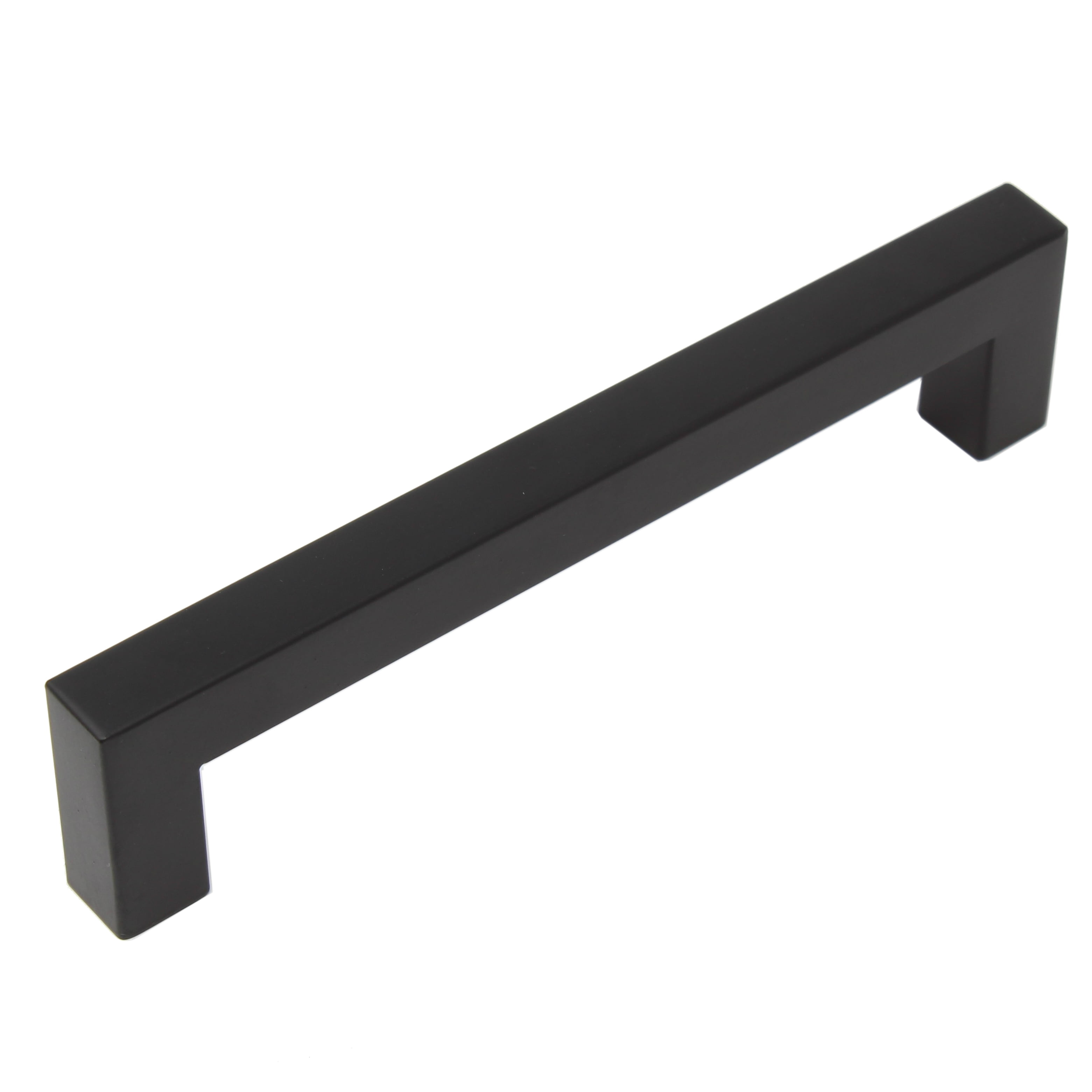Materials and Manufacturing Processes: Black Steel Cabinet Handles

Creating durable and aesthetically pleasing black steel cabinet handles involves careful selection of materials and precise manufacturing processes. The final product’s quality, longevity, and environmental impact are all directly influenced by these choices.
Black steel cabinet handles – The manufacturing process begins with the selection of raw steel. This steel is then shaped and formed into the desired handle design using various techniques, followed by surface treatments to achieve the characteristic black finish and enhance its durability. Finally, the handles undergo quality control checks before packaging and distribution.
Steel Types Used in Black Steel Cabinet Handles
Several types of steel are suitable for manufacturing cabinet handles, each offering unique properties. The choice depends on factors like desired strength, corrosion resistance, and cost.
- Mild Steel: A common and cost-effective option, mild steel offers good strength and is relatively easy to work with. However, it’s less resistant to corrosion than other types of steel.
- Stainless Steel (e.g., 304 or 316): Stainless steel grades provide superior corrosion resistance and durability, making them ideal for high-humidity environments. 316 stainless steel offers even greater corrosion resistance than 304, particularly against chloride-containing environments (like near coastal areas).
- Carbon Steel: Carbon steel offers high strength but is susceptible to rust without proper surface treatment. It’s often chosen for its affordability and ability to hold a sharp edge (important for some handle designs).
Manufacturing Processes, Black steel cabinet handles
The creation of black steel cabinet handles involves a multi-stage process. It typically starts with cutting the raw steel into blanks, using methods such as laser cutting, stamping, or waterjet cutting, depending on the handle design’s complexity and production volume. These blanks are then formed into the final handle shape through processes like forging, casting, or bending. After shaping, the handles undergo surface treatments like powder coating or electroplating to achieve the black finish and enhance corrosion resistance. Finally, quality control checks ensure that the handles meet the required standards before packaging.
Comparison of Black Steel Cabinet Handle Types
Different steel types and manufacturing processes result in handles with varying durability and cost. The table below summarizes these differences.
| Handle Type | Material | Durability (Corrosion Resistance & Wear) | Cost |
|---|---|---|---|
| Basic Handle | Mild Steel with Powder Coating | Moderate; susceptible to rust if coating is damaged | Low |
| Standard Handle | Carbon Steel with Electroplating | Good; relatively durable but can still rust if the plating is compromised | Medium |
| Premium Handle | 304 Stainless Steel | Excellent; highly resistant to corrosion and wear | High |
| Luxury Handle | 316 Stainless Steel | Exceptional; extremely resistant to corrosion, even in harsh environments | Very High |
Environmental Impact and Sustainable Practices
The manufacturing of black steel cabinet handles has an environmental impact, primarily due to the energy consumption involved in steel production and surface treatments. Sustainable practices such as using recycled steel, minimizing waste during manufacturing, and employing environmentally friendly coatings can mitigate this impact. Furthermore, selecting durable materials reduces the need for frequent replacements, further lessening the environmental footprint over the product’s lifecycle. Companies increasingly adopt energy-efficient manufacturing processes and prioritize responsible sourcing of materials to minimize their environmental impact.
